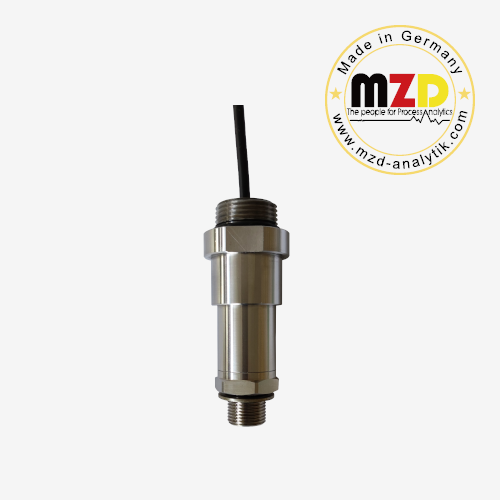
Overview
Today, the most common way to produce green hydrogen is through electrolysis – a process that uses electricity from a completely renewable source to split water into hydrogen and oxygen. But if the hydrogen concentration remains constant, the sensor signal may increase or erroneously decrease with increasing water fractions, with errors of up to 2%H2. Hydrogen concentrations between 4 and 77 vol.% can produce explosive gas mixtures. Therefore, it is very important to eliminate and correct for humidity effects in catalytic combustion-based, metal oxide semiconductor-based and thermal conductivity-based hydrogen sensors during green hydrogen production.
Our new thermal conductivity H2 sensor integrate humidity and temperature sensor for compensation, providing a new better solution for the green hydrogen energy industry and a better future!
Principle
Thermal conductivity gas analyzer is an effective method to measure one of two components in a gas mixture (the thermal conductivities differ a lot). Mainly used to measure the content of hydrogen (H2), carbon dioxide (CO2), argon (Ar), etc.
The sensor chip consists of a silicon frame with 2 silicon-nitride membrane2. Each membrane has a micromechanical heating element at its center, and the chip uses a heating resistor to control heating of the center of the membrane to about 40°C above ambient temperature. The resulting temperature increase of the center is measured by the thermopile.
The actual temperature increase depends upon the effective thermal resistance between membrane center and ambient, this is influenced by the thermal resistance of the gas surrounding the sensor. For each binary gas mixture the ratio of temperature increase to heating power is dependent on the mix ratio. The chip determines the thermal conductance between the ambient and the center of the membrane by measuring the temperature elevation of heater, measures the gas composition. For improve accuracy, temperature and humidity sensors are built in for compensation.
Advantage
★Built-in temperature and humidity sensor for compensation
★High-accuracy measurement
★Low drift
★Rugged and durable design
★Long life
★Fast response
Measurement components and ranges
• H2: 0 ~ 1% ~100%
